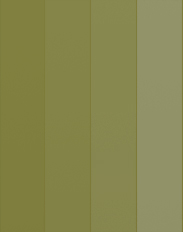- Azimuth (how far off true north)
- Roof pitch
- Power costs and price increases
- Feed in tariffs (per energy retailer)
- System size
- System degradation
- Energy usage patterns (day light use of power)
Possible power output is computed as well as the expected savings per year, quarter and per month. The break even point in years is calculated where the savings from the system meets the cost of the system.
Advice on which panels and inverters is also provided.
Panels
When deciding on what panels to purchase, the following factors should be considered:
- Available north facing roof space.
- Shade that may affect the panels.
- The temperature extremes the panels will be exposed to
- The amount of salt air.
- The quality of the components used to manufacture the panels especially:
- silicon - is it tier one, 2, 3, or 4? Tier 1 silicon will not degrade as quickly as the lower tiers.
- the glass - 3.2mm tempered glass should be the least that is used in Australia. Some panels are still using 2mm plate glass, typically panels sold into Asian markets. This glass would not withstand the pressure from a descent hail storm.
- The frame - is it marine grade? Salty air in Australia can cause enormous levels of corrosion if the incorrect metal is used.
- Is the design mono-crystalline, poly-crystalline or thin film? There are advantages and disadvantages to each of these.
- The physical size of the panel as well as the kW rating of the panel.
- The efficiency of the panel.
- The temperature co-efficiency (power) of the panel is also important in a hot climate. Some panels really should not be sold in Queensland for example because their handling of heat is just not up to scratch. This efficiency rating, which is on every specification sheet, tells us what percentage output will drop by for every 1 degree Centigrade that the cell temperature is above 25 degrees. In some locations, the cell temperature on a panel in Summer can hit up to 90 degrees.
Recommendations:
- Sunpower
- LG
- Canadian Solar
- Trina
Inverters
This component is probably more important than the panels because the inverter is more likely to fail if you purchase badly. So, where do you start?
Unfortunately, unlike when buying a car or perhaps an electrical appliance, the brand names in this category will most likely be unknown to you (as with most brands of panels). This is where the experience of your provider is all important. If you are lucky enough to find an honest and knowledgeable sales person (yes, they do exist), they should be able to guide you well.
There are many features on the better inverters but, to keep it basic, an inverter converts DC power to AC power. They can be broken down into a few main categories, string inverters (usually installed on a wall) and micro-inverters (installed on the roof under the panels). String inverters are the most commonly used in Australia although micro inverters are gaining in popularity. String inverters can either have a transformer or be transformer less (referred to as TL). They can have a single maximum power point tracker or dual MPPT (the dual can handle handles facing two different directions). Micro inverters can be DC to AC or DC to DC (sometimes referred to as DC optimisers).
OK, if you weren't confused before you started reading, you probably are now. I do not propose to go into the benefits / features of each type here. But I will list some of the potential problems that could occur if you make a bad choice:
- High failure rate. Some inverters sold here in Australia have had failure rates as high as 30%. These failures can be caused by numerous factors aside from just poor quality of manufacturer:
- Salt air.
- Dust.
- Geckos.
- Overheating.
- Poor air circulation.
- Poor efficiency - output suffers.
- LCD panels fade in the light.
- Lack of local support from either the reseller or the manufacturer.
- Poor communication options.
- Inability to be power factor or export limited (now required by some electrical wholesalers).
- Incorrect voltage range to support the panels installed.
- Inability to 'talk' to battery management systems
Recommendations:
The strongest recommendation that I can make, if you are lucky enough to live in South East Queensland, is to call Adrian Horin on 0400715799 for a personal, free of charge, on site consultation. Alternatively, please provide your details on our enquiry page.



